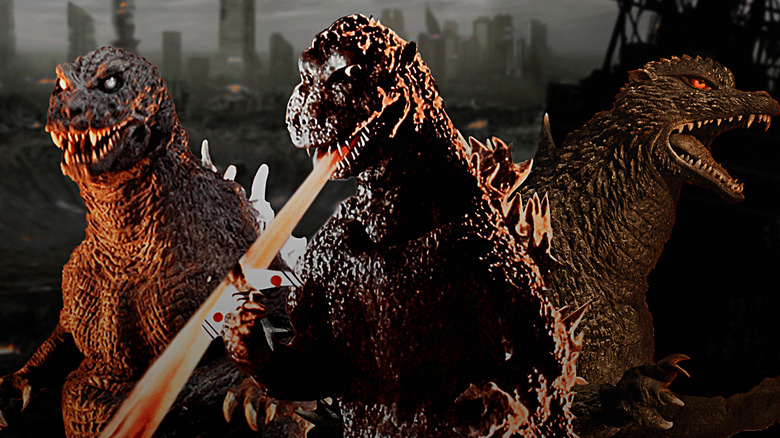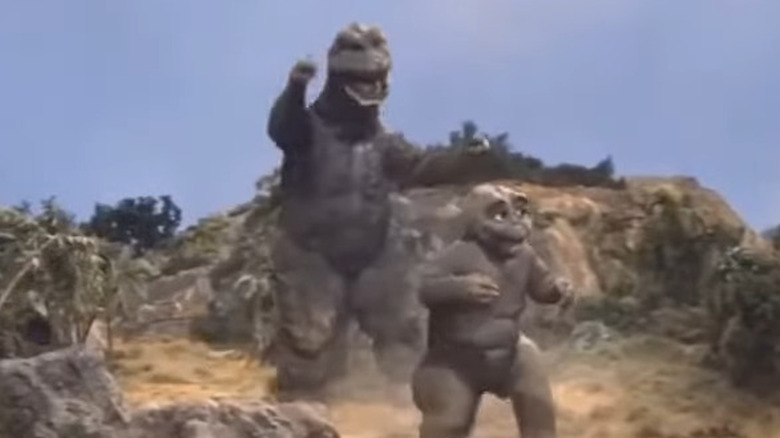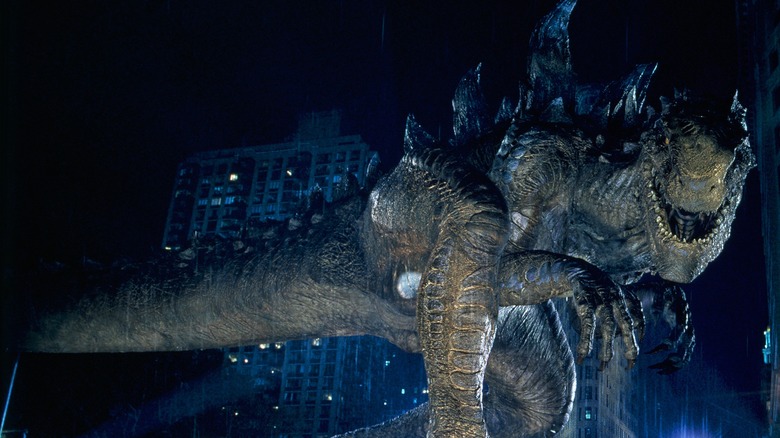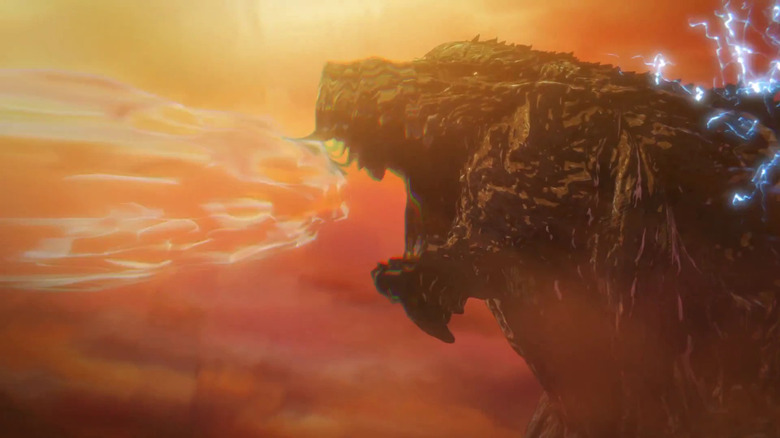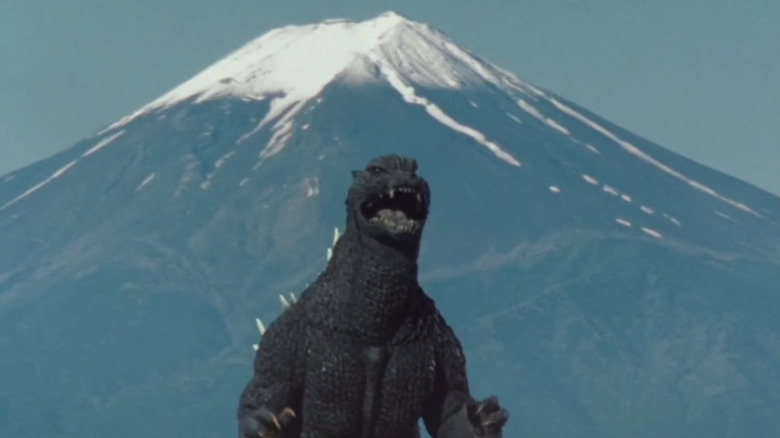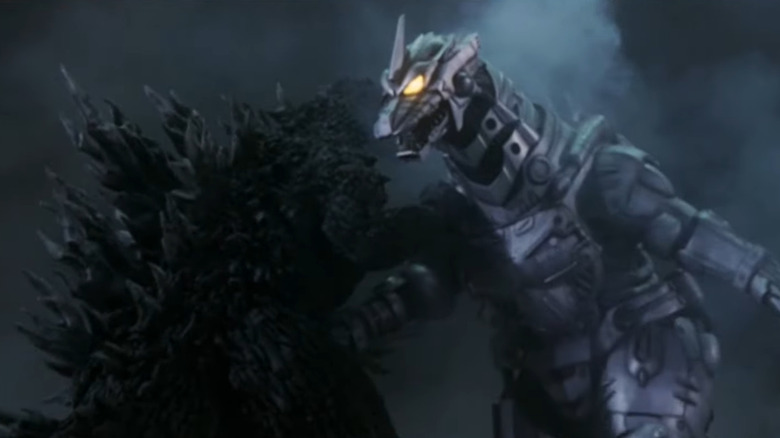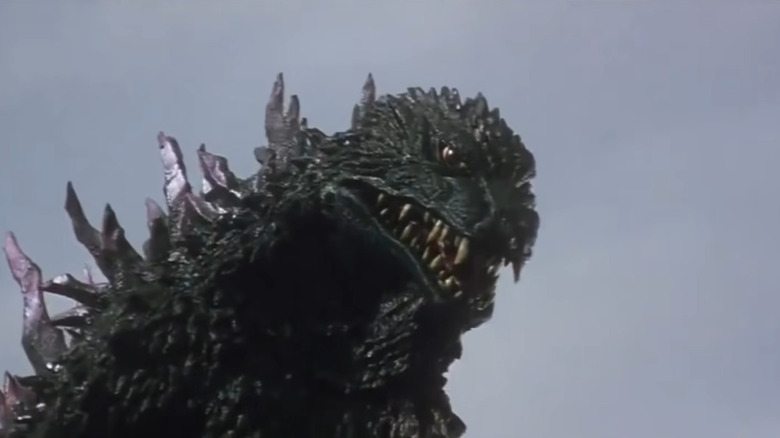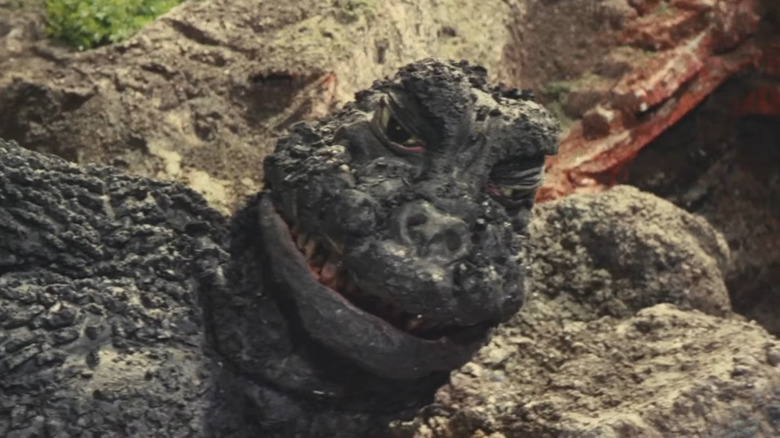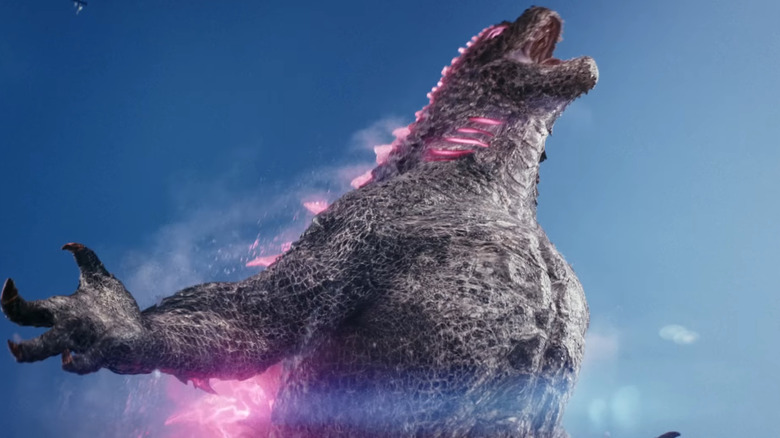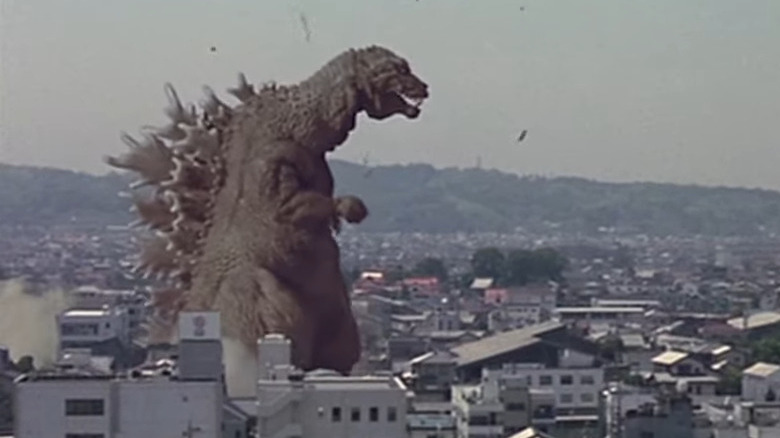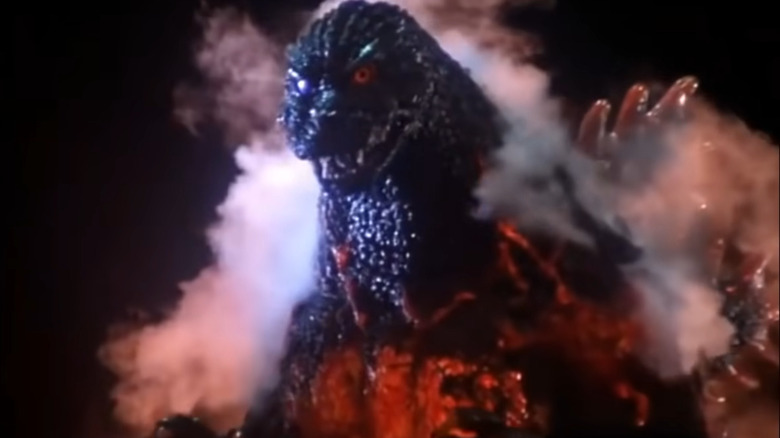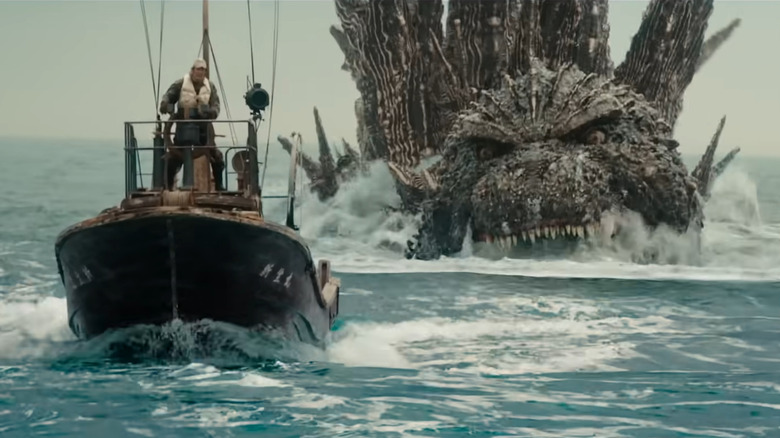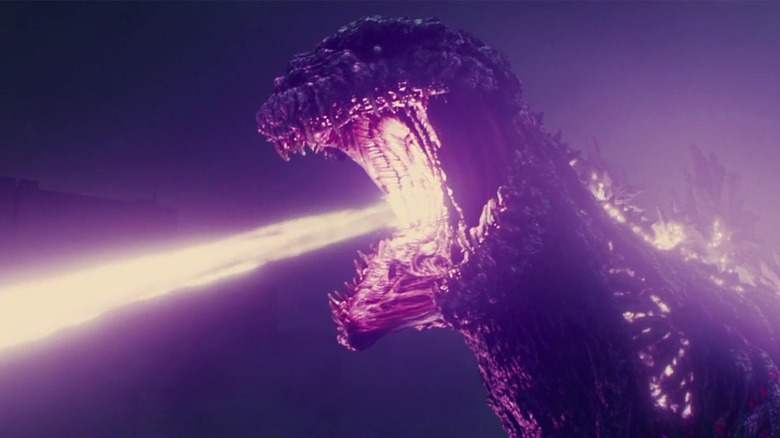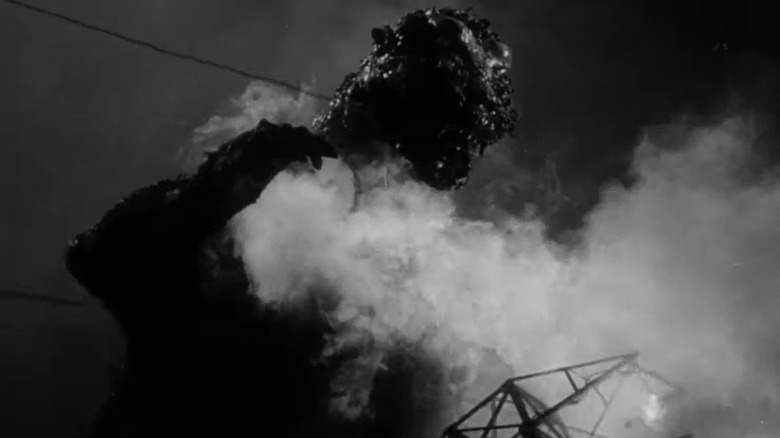Every Movie Godzilla Ranked From Worst To First
There's a reason why, nearly 70 years after his creation, Godzilla retains the title King of Monsters. From the days when he was a soberingly urgent and abstract metaphor for atomic warfare (played by various men in elaborate suits) to his rise as a contemporary titan of blockbuster filmmaking (now rendered with all the spectacle CGI can provide), he is easily one of the most enduring characters in cinema.
These days, fans of the iconic Kaiju have been lucky enough to enjoy multiple versions of the character within the past few years alone. While American film studio Legendary Pictures has turned the character into the center of a cinematic universe, Funimation, Toho International, and Netflix have developed their own reimaginings of Godzilla based out of Japan.
Despite his celebrated cultural status, however, not every version of Godzilla is created equal. For this ranked list, the writer used their own experience with the character, considering every iteration and assessing them in terms of in-universe feats, design evolution, and their impact on the franchise at large to determine which Godzilla reigns supreme.
How do you rank a character like Godzilla?
Comparing and ranking every iteration of Godzilla is no easy task. The first thing we had to do was determine which Kaiju would qualify for consideration, ultimately deciding that we would only focus on versions of Goji that have appeared in movies, and that each version would be assessed by their individual continuity. This meant no television Godzillas or Godzilla off-shoots (Space Godzilla, Mechagodzilla, Godzilla Jr., etc.) would be included, and multiple forms of one Godzilla would be assessed as one character.
As for the actual ranking, we didn't want to just measure them in terms of physical power — otherwise, Godzilla Earth would nab the top spot (and that just doesn't feel right). And while we could've focused solely on narrative quality, plenty of so-so "Godzilla" movies are saved by their depiction of the titular beast. Indeed, there are innumerable qualities by which we could have judged these Kaiju, each one leading to a different list if judged alone.
We did our best to rank them based on a combination of attributes, primarily the specific characteristics that made each iteration of Godzilla memorable (power, design, impact, etc.). This methodology — along with some minor temperature-checking from fan communities online — led us to this ranking.
TriStar Godzilla - Zilla
For any longtime Godzilla fan, it should be no surprise that the Godzilla of the 1998 TriStar film comes in at a very distant last place on this list. While plenty of versions of the character have looked and acted strangely compared to their nuclear brethren, only this one deviated so far from the original vision as to seemingly offend Toho (the production company behind the original 1954 "Godzilla" film) and earn the diminishing retroactive nickname "Zilla."
This was because, as "Godzilla: Final Wars" producer Shogo Tomiyama infamously said of the film, it "took the 'god' out of 'Godzilla.'" Indeed, in Roland Emmerich's retelling of the tale, Godzilla is not an unimaginably powerful monster of untold destruction, but a large dinosaur that — though deadly — is easily managed by the American military. Viewing it in conversation with the original Godzilla, which stood as a metaphor for atomic destruction, this "Jurassic Park"-style take on the character reflects the late-'90s jingoistic American hubris that believed there was no problem that couldn't be solved with missiles, soldiers, and patriotic individualism.
It's a common misconception that the TriStar Godzilla and the character Zilla that appears in "Final Wars" are one and the same — if true, this would actually elevate the former's status somewhat. However, Zilla is a separate enemy inspired by the 1998 film, solidifying TriStar Godzilla as a one-off dud with little legacy or impact.
Netflix Godzilla - Godzilla Earth
With TriStar's Godzilla out of the way, the rest of the list becomes a lot harder to determine. Arguably hardest to place of all is Godzilla Earth, the behemoth Kaiju that leads Netflix's 2017-2018 trilogy (which kicked off with "Godzilla: Planet of Monsters"). Conceptually, this version of Godzilla should be among the best on the list — but what good is a concept if the execution turns out to be so disappointing?
Godzilla Earth — so named because of his successful conquering of the planet — exacts the full potential of his King of Monsters persona. The largest and most powerful of any iteration of the character, he is distinguished only by his admittedly awe-inspiring destructive capability. But even ignoring the surprisingly mediocre story at the heart of Netflix's "Godzilla" trilogy, Godzilla Earth is so far down on this list because the series' animation style doesn't do his planet-conquering power justice.
In fairness, the Netflix trilogy is less about big monster battles than it is about the social and psychological drama of the world it creates. That doesn't change how awkward and stiff Godzilla moves, though, which — even compared to earlier versions of the character — becomes unforgivably distracting as the plot turns toward action sequences. Compare it to the spectacular way Godzilla is depicted in Netflix and Toho Animation's series "Godzilla: Singular Point," and it's clear that the Netflix trilogy of films fumbled their attempt at an animated Godzilla.
Final Wars Godzilla - Final Goji
When it came time for the Millennium era of "Godzilla" films to come to a close in 2004, it rather serendipitously coincided with the 50th anniversary of the original 1954 "Godzilla" film. As such, "Godzilla: Final Wars" served as both a tribute to the character's lasting impact and historical significance in popular culture, and a send-off for the franchise for the foreseeable future.
This version of Godzilla isn't bad, per se, but it's not unique enough to warrant being placed above any of his peers (besides the clear outliers from Netflix and TriStar). He is intentionally designed to synthesize various identifiable characteristics of the character into one being, but the result is simply Godzilla at his safest (creatively speaking, that is — thanks to some new mobility in the Kaiju suit, this is the first iteration of the character that can throw hands and perform WWE-worthy takedowns). While this quintessential Goji look is great for a bicentennial tribute piece, it lacks the forward-facing visual improvements that were originally intended to make this "final" Godzilla truly stand out from his predecessors.
Meanwhile, in the story of "Godzilla: Final Wars," this version of Godzilla forgives humanity for the first time on screen (thanks in part to the goofy-looking Minilla). Though passingly poetic as an end to his story, it doesn't square with his history as a retribution for warfare or as an apex predator securing his territory. From writing to design to execution, everything about Final Goji feels disappointingly safe.
Kiryu Godzilla - KiryuGoji
Ranking the Millennium era Godzillas is incredibly difficult (especially since you're already sort of splitting hairs once you get past Zilla anyway). Each incarnation is technically unique, but so similar in design and impact that it mainly comes down to how the individual films use the character, and whether or not — mostly independent of the film's overall quality — it does justice to what "Godzilla" fans imagine when they think of Goji.
In our opinion, KiryuGoji (seen in the Millennium films "Godzilla Against Mechagodzilla" and "Godzilla: Tokyo S.O.S.") could easily swap places with the next entry on this list. They're both worthy depictions of the character that deliver visually and performance-wise what fans demand from the character. In choosing one over the other, however, it comes down to how overshadowed Godzilla is by Mechagodzilla in this duology. Both films almost take the character for granted, and are much more interested in exploring all the weird and interesting ways they could update Mechagodzilla (like, for example, using the bones of the 1954 Godzilla as the basis for his creation).
These films have such an obvious fondness for Godzilla's robotic adversary that they attempt to give him a more complex characterization (whether this is successful or not will differ depending on if you believe that's something a giant metal dinosaur can have) and a sacrificial hero's death. And if all this weren't enough, this Godzilla is referred to as Kiryu Godzilla or KiryuGoji — Kiryu being the new name given to Mechagodzilla.
First Millennium Godzilla - Godzilla 2000
"Godzilla 2000: Millennium" is in many ways the perfect "Godzilla" film. It's just as far from the worst as it is from being the best, which is to say it's the sort of middle-of-the-road Kaiju flick that delivers plenty of destructive action without trying to punch too far above its weight class in terms of plot. This simple yet solid approach to the revival of the franchise carried through its redesign of Godzilla, which — rather than attempting to reinvent him entirely — made novel additions that felt fresh yet supportive of what was already there (the purple, glowing back spikes were a particularly nice touch).
In all, Godzilla 2000 (or MireGoji, as he is also known) is a meat and potatoes Godzilla with a little extra seasoning to keep things spicy. The only reason he's not further up on the list is that his superior peers have stronger storylines and characterizations. Like many "Godzilla" films, "2000" attempts to reconcile Goji's reputation as a destroyer and protector, culminating in a bleak final scene that seemingly depicts him deciding to destroy Tokyo (though the visual is a tad muddled by lines of dialogue theorizing that Godzilla chooses to protect humans despite their attempts to destroy him). There's a confused rage to his characterization that, while not nearly as strong as higher entries on this list, is unabashedly nihilistic to the point of feeling powerful.
Second Showa Godzilla - Second Generation Godzilla
There are two types of "Godzilla" fans: Those who think we've placed the Second Showa Godzilla too low, and those who think we haven't placed him low enough. For those who love the second and most frequently used version of Goji, there's a "you either get it or you don't" vibe. He's almost like a Golden Age comic book character, in the sense that his stories are so numerous and varied that they range from unabashed, borderline non-canonical goofiness to genuinely great entries in the sprawling franchise. And though one could certainly choose to ignore the more ridiculous aspects of his characterization over the years and only judge him by his impact, some feel they must stand behind Second Generation Goji in totality to truly appreciate the spirit of the "Godzilla" franchise.
On the other hand, some think this iteration of Godzilla cheapens what the 1954 version stood for, both in terms of its political message and its general status as a horror movie monster. But without this shift from straight devastator to quasi-defender, "Godzilla" wouldn't have given birth to the cadre of incredible Kaiju that fans love. Indeed, from his enemies to his design and performance, Second Gen Goji established the near entirety of the foundation that every Godzilla since has stood on. The higher entries on this list — save maybe one — simply wouldn't exist without this version of Godzilla. This ranking won't make anyone happy, but it splits the difference as fairly as we could.
Legendary Godzilla - MonsterVerse Godzilla - Titan Goji
When Hollywood made plans to tackle "Godzilla" after the disastrous attempt in 1998, there was some understandable apprehension among longtime fans of the series. But, especially seeing as this iteration of Godzilla has been updated so the studio can market him as essentially a mainstream blockbuster action star, Legendary Pictures could have done a lot worse. Though this Godzilla has been rendered solely using CGI animation, he feels more credible than past suited iterations. Although those performers and technicians were often able to use their artistry to make audiences forget they were watching a man in a costume stomping on miniatures, it changes the character entirely to unshackle him from the constraints of reality.
Case in point: When this Godzilla kills the female MUTO in the 2014 film, he does so by forcing her jaw open and blasting his atomic breath straight down her throat. This now-iconic "Godzilla" scene is too physically and technically complex to be portrayed practically — and the effect here boasts a flavor of destructive spectacle that just doesn't exist in earlier entries.
From a design standpoint, the minor adjustments made to emphasize his animalism are effective, but subtle enough that they honor the collective image of Godzilla that fans have. Characterization-wise, the choice to focus on him as an animal strikes a nice balance between horror and action — he's horrifically vicious, but not so intentionally evil that you can't root for him when appropriate. For a lot of fans, this is the ideal way to write Godzilla.
GMK Godzilla
Overall, the Millennium era had a clear preference for leaning harder into the villainous side of Godzilla than previous eras had. Where other continuities would normally use a different villain like Mothra or Ghidorah to give Goji an enemy that wasn't the innocent population of Tokyo (thereby turning him into something of an anti-hero), the Millennium era saw these characters almost as protagonists in a horror movie, struggling to overcome or even simply survive the King of Monsters.
This strategy can overshadow Godzilla, as was the case with Kiryu in "Godzilla Against Mechagodzilla." But in "Godzilla, Mothra and King Ghidorah: Giant Monsters All-Out Attack," Godzilla is finally given center stage as an unapologetically evil and relentlessly vindictive villain. This Godzilla embodies a disgust with humanity that permeates throughout the entire film, which treats living humans as worthy of nothing but punishment and suffering for past transgressions. He takes the somber tune of "Godzilla 2000: Millennium's" nihilism and raises the volume, turning it into a raucous heavy metal anthem that's hard to dismiss.
Heisei Godzilla
For many "Godzilla" fans, the Heisei Godzilla is the definitive post-1954 version of that character — and that's not because it dominated the '90s, and therefore earns the uncritical and undying loyalty of '90s kids (okay, it's not only because of that). The Heisei era was able to reign in the more outlandish parts of the franchise while maintaining the propulsive, "anything can happen"-style sci-fi that makes the Showa era fun despite some of its goofiness. The result is a Godzilla that feels tonally closer to the 1954 version, but doesn't turn its back on the unexpected concepts that already resonated with audiences.
Similar to the Legendary Pictures iteration of the character, the smartest change the Heisei era made was bringing a sense of danger back to Godzilla by not allowing him to rise above anti-hero status in terms of altruism. Godzilla is not your friend — you're just not always his enemy. This version of Godzilla is also uniquely varied in its appearance, as though it were continuing to evolve throughout the series in reaction to the various monsters it had to battle.
This Godzilla's storyline culminates in one of the greatest "Godzilla vs..." films of all time: "Godzilla vs. Destoroyah." It's an operatic production that portrays a knock-down-drag-out fight between two monsters as a Shakespearean tragedy — and it works because of how consistent the Heisei Godzilla is. Seeing him succumb to a meltdown feels genuinely moving because of how much care was put into his characterization.
Minus One Godzilla
Cry recency bias all you want, but "Godzilla: Minus One" proved that both a "Godzilla" story and the character of Godzilla itself can be impactful and terrifying without seeing much of him at all. In the reactions of the few that survive Minus One Godzilla's wrath, he becomes mythologized in a way that evokes the same dread in the audience that it does in his victims.
After two attempts (varying greatly in success) to drastically overhaul the character in the Reiwa era, it's refreshing that they return to a simpler characterization that allows the story to focus on the qualities inherent to Godzilla that make him scary in the first place. His gargantuan size, the scale of his destruction — even just the seismic weight of his footsteps can feel far more chilling than sharper claws, darker eyes, or any of the previous redesigns aimed at making him more threatening.
Shin Godzilla
Of all the redesigns on this list, none were as complete or successful as that of Shin Godzilla. Rather than depict the King of Monsters as the hulking atomic brawler he was before the 12-year post-Millennium era hiatus, Shin Godzilla is a slimy creature with multiple forms that has less in common with a god than he does the devil himself.
Perhaps the creative team behind "Shin Godzilla" recognized that, over six decades, audiences had grown complacent with the usual ways Godzilla had been wreaking havoc. Especially after the start of the Legendary Pictures MonsterVerse, his bag of tricks were the tools of an action star — not a monster. So rather than send him out once more to breathe fire and topple buildings with mad swipes, they gave Godzilla the ability to ooze molten blood from his gills and added a tiny face to the end of his tail. The final shot of Godzilla asexually spawning skeletal, sinewy beings from his petrified body is an effective image of body horror, and one of the most unsettling moments in the entire franchise.
First Showa Godzilla
Was there ever any doubt about who would sit at the top of this list? Sure, we could've gone with the strongest version of Godzilla, or perhaps the one with the flashiest redesign. But at the end of the day, it just didn't feel right not to pay due respect to the true King of Monsters.
This isn't to say that the original Godzilla is only great because he was the first. His rampage is a work of art that — thanks in part to the black and white coloring — feels timeless, even in comparison to modern iterations that use more complex suits and CGI animation. And though he dies at the end of his first outing, this arguably improves his standing by keeping his legacy quarantined from direct contact with lesser Gojis.
It's also worth noting that, in most continuities, this Godzilla existed before that continuity's Godzilla — he always has primacy, no matter the timeline. He's suitably terrifying, taken seriously by everyone in front of and behind the camera, and he has a literal "legacy of monsters." No other version of Godzilla deserves the top spot more than him.
